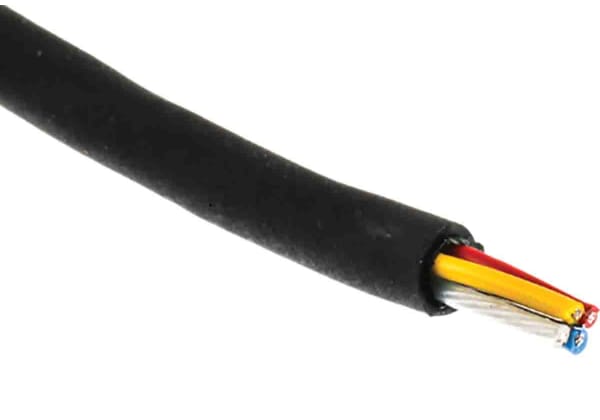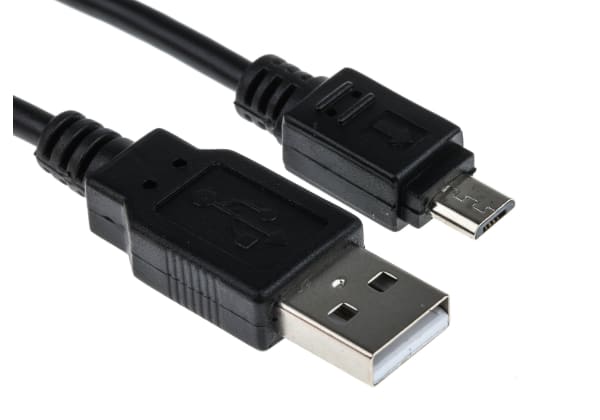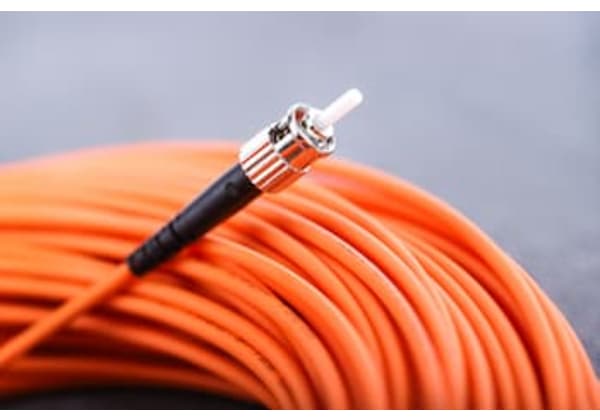- Published 16 Sept 2024
- Last Modified 16 Sept 2024
- 8 min
Understanding Optical Audio Cables
Wondering what optical audio cables are and how they work? Learn here about the advantages of these cables and how they compare to other types of audio cables.
You’ve likely used HDMI cables to connect home or office media devices, but what is an optical audio cable? This alternate method of delivering sound signals has been around far longer than HDMI and still holds up quite well to it today. Learn here how it works, when to use it, and how its cables compare to other types of audio cables.
What are Optical Audio Cables?
If you’ve ever connected a Blu-ray DVD player or video game console to a stereo receiver or soundbar, you may very well have seen (and overlooked) the optical output port next to the HDMI port. It would be a port shaped like a piece of bread and protected by a flap (or sometimes a plug you need to remove). You may also have seen a red glow emitting from that port while the device is in use. That would be the LED for sending an audio signal using an optical audio cable.
The somewhat paradoxically named optical audio cable sends digital audio signals between electronic media devices, often in home theatre setups. They use fibre optic technology, which avoids some of the hassles of conducting wire, such as electromagnetic interference.
Toshiba originally developed these cables in the 1980s to support the then-new practical digital audio technology: CD players. These cables and their connection ports are thus often referred to as ‘TOSLINK.’
How do Optical Audio Cables Work?
How do optical cables work for audio transmission? They use the principles of fibre optics, which transmit signals using light rather than conducted electricity (as in most other cables).
Fibre optic cables have a glass or plastic fibre core encased in a cladding encased in a protective coating. Light travels within the core, continuously reflecting off the inside of the cladding at an angle that progresses the reflected light along the cable’s length. Fibre optics have incredible performance and reliability for long-distance high-volume data transmission, and they are quickly becoming the dominant form of internet delivery to homes and businesses.
For the case of optical audio cables, the reflected light is sound (though not video) converted into digital signals. The device sending the audio signal (such as a Blu-ray player) uses an LED to push the digital signal’s light through the cable, while the receiving device (like a soundbar) receives it and converts it to signals speakers can play.
Advantages of Optical Audio Cables
Optical audio cables offer the following benefits:
- Minimal Interference: Since they involve travelling light rather than conducting electricity, electromagnetic interference from adjacent wires isn’t a factor.
- Strong Audio Quality: If you prefer digital audio over analogue audio, optical audio cables deliver a very high-fidelity audio signal with minimal losses.
- Compatibility with Older Equipment: Optical audio cables can still work with stereo equipment going back to the 1980s.
- Sound Formats: Optical audio cables are versatile and can handle the following sound formats: DTS-ES Matrix 6.1, PCM 2.0, Dolby Digital EX 6.1, DTS Digital Surround, Dolby Digital 2.0 to 5.1, DTS-ES Discrete 6.1, and DTS 96/24.
Uses of Optical Audio Cables
What are optical audio cables used for? They have never been very commonly used (excessively powerful when they came out, and supplanted by HDMI when people did want better performance), but some optical audio cable uses that can still come up today include:
- Connecting Older Devices: If you need to connect to an older receiver that still delivers great sound but lacks HDMI inputs, you can connect your Blu-ray player or games console to it using an optical audio cable and then send video to your TV separately over HDMI.
- Making Dedicated Audio Connections: If you prefer digital sound quality and enjoy listening to music on CDs, you may want to use your Blu-ray player for that. If it has an HDMI route through your TV and then to a soundbar, a separate digital audio cable going straight to the soundbar can prevent you turning on your TV just to listen to music.
- High-quality Digital Audio: These cables support the PCM 2.0 format, which delivers uncompressed music for digital audio lovers.
Comparing Types of Audio Cables
How do optical audio cables compare to other types of audio cables? Analogue and HDMI are the main other types to consider.
Analogue vs Optical
The age-old question: Is the sound quality better from analogue or digital signals? Vinyl records or compact discs? Both have their advocates, so comparing optical audio vs analogue audio cables will largely come down to the music format you wish to use; the cables and ports will be secondary.
Generally, digital sound is more reliable and has no problems with popping or hissing. It gives a cleaner sound, though some find it off-putting. Analogue delivers a continuous waveform of sound, unlike the packets of digital sound, and this can feel warmer and more natural.
If you do prefer listening to vinyl, you’re unlikely to find a turntable with an optical output, simply because this feature would negate any benefits of analogue sound and not appeal to those interested in the format. If you must make this kind of conversion, though, you’ll need an adaptor that can convert analogue to digital optical.
Now, another field of analogue sound is ‘AUX’ connections. These are the 3.5 mm jacks found in many headphones, cars, and mobile devices. AUX connections are less expensive than optical audio ones and offer great compatibility with all the mobile devices out there. They do still experience the drawbacks of analogue sound, though, such as susceptibility to interference.
RS carries optical audio cables with 3.5 mm jacks, letting you connect AUX ports to digital optical ports.
HDMI vs Optical
Ubiquitous in home theatre devices, HDMI cables are great for making easy, reliable audio and video connections at the same time.
HDMI largely wins out over TOSLINK, starting with its simplicity: With audio and video handled at once, there are fewer cables to buy and install. You also won’t need separate remote controls, which you would for an HDMI+TOSLINK video/audio setup. Also, HDMI can handle high-definition audio formats like Dolby Atmos, Dolby Digital Plus, DTS HD, and TrueHD.
TOSLINK cables do excel in their reliable length, though: a maximum of 10 to 30 m vs HDMI’s 5 to 15 m.
A common variant of HDMI is HDMI ARC, which allows a TV to send audio to a soundbar as well as receive video from it. If you have equipment that doesn’t support this type of HDMI, then an optical audio cable can help you out. If you have an HDMI cable connecting a soundbar to a smart TV, but those lack HDMI ARC support (or the ARC just doesn’t work, which can happen), a streaming service’s audio originating at the smart TV can make it to the soundbar via TOSLINK.
A more advanced variant is HDMI eARC, which has even higher bandwidth and can handle 7.1 channel audio. TOSLINK can only do 5.1 or 6.1, so it can’t handle as many speakers.
None of that makes optical audio cable a poor choice, though. If your available connections necessitate it, it will deliver good quality sound to you.
Selecting Optical Audio Cables
Optical Audio Cable Types
If TOSLINK is right for you, then think about these features when selecting the specific cable to use:
- Length: Consider your space, the bends you need to make, and TOSLINK’s limit of 30 m.
- Outer Material: Nylon coating is more protective than PVC, so weigh the durability you need.
- Connection Angle: Some cables have 90° connectors rather than straight ones, letting them connect in tight spaces.
Other than that, most TOSLINK cables support the same audio formats, so it’s hard to go wrong with your choice.
Optical Audio Cable Connections
All TOSLINK ports are female, so their cable connections will all be male. Beyond that, adapting cables exist, letting you connect TOSLINK ports to and from ports like 3.5 mm headphone jacks and mini-TOSLINK (a smaller-size digital audio connection).
If the distance your wire has to run means you need to know how to connect two optical cables, your best bet is a female-to-female TOSLINK adaptor. Otherwise, you’re looking at a complex splicing job to join two fibre optic cables: doable, but difficult.
RS carries AV cables to meet all your audio and video connection needs. Browse them today to unlock high-quality sound in your space.
Related Articles
Related links
- Optical Audio Cable
- RS PRO TOSlink to Male 3.5mm Stereo Jack TOSLINK Fiber Optic Audio Cable Assembly, 2.5m
- RS PRO TOSlink to Male 3.5mm Stereo Jack TOSLINK Fiber Optic Audio Cable Assembly, 1.5m
- RS PRO Male TOSlink to Male TOSlink Optical Audio Cable, 5m
- RS PRO Male TOSlink to Male TOSlink Optical Audio Cable, 10m
- Van Damme Male TOSlink to Male TOSlink Optical Audio Cable, 250mm
- RS PRO Male TOSlink to Male TOSlink Optical Audio Cable, 2m
- RS PRO Male TOSlink to Male TOSlink Optical Audio Cable, 15m



